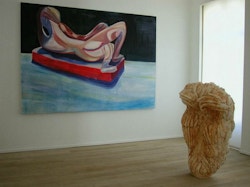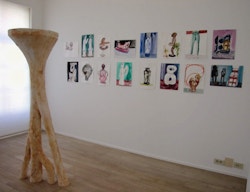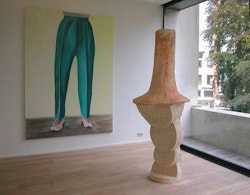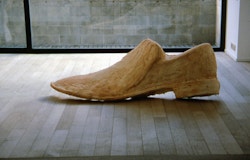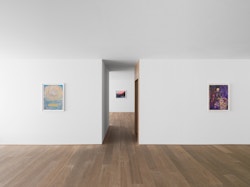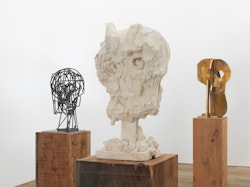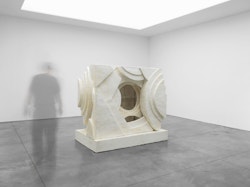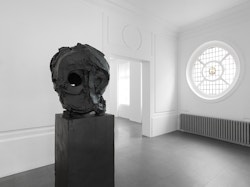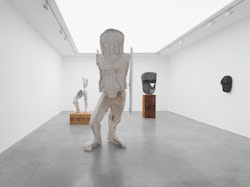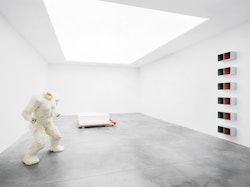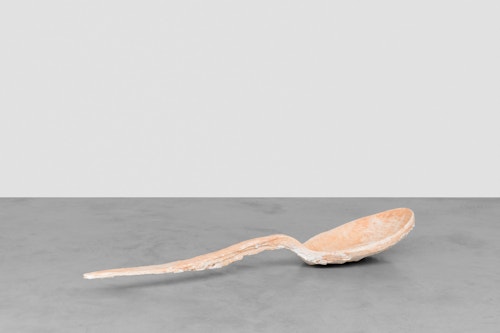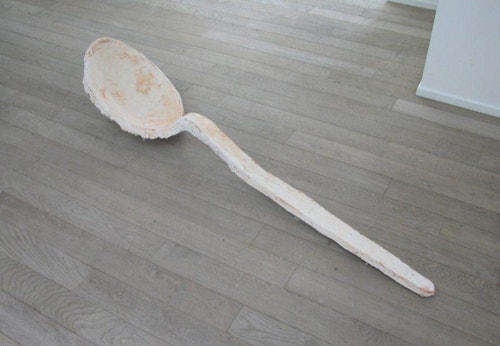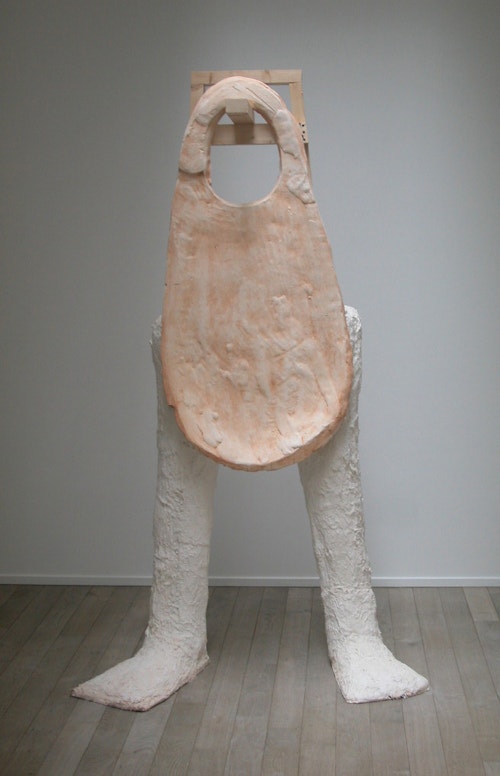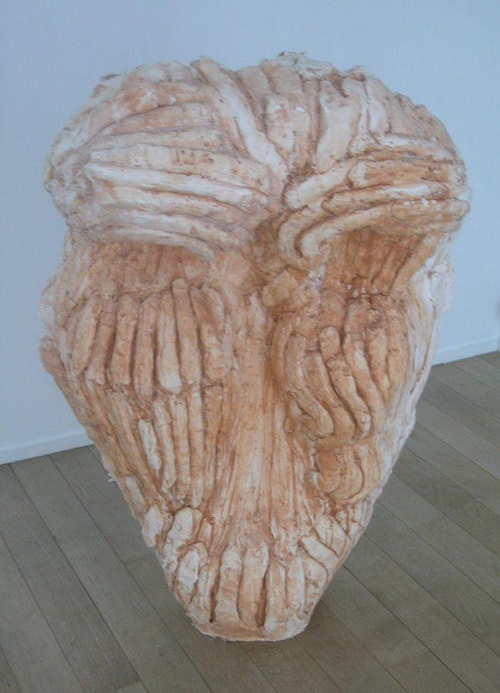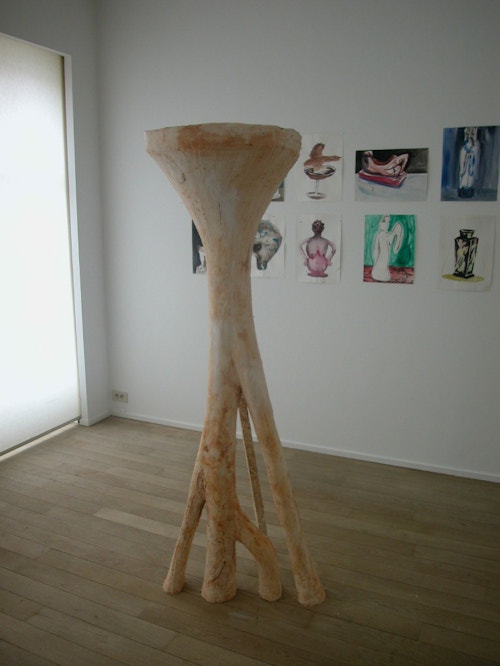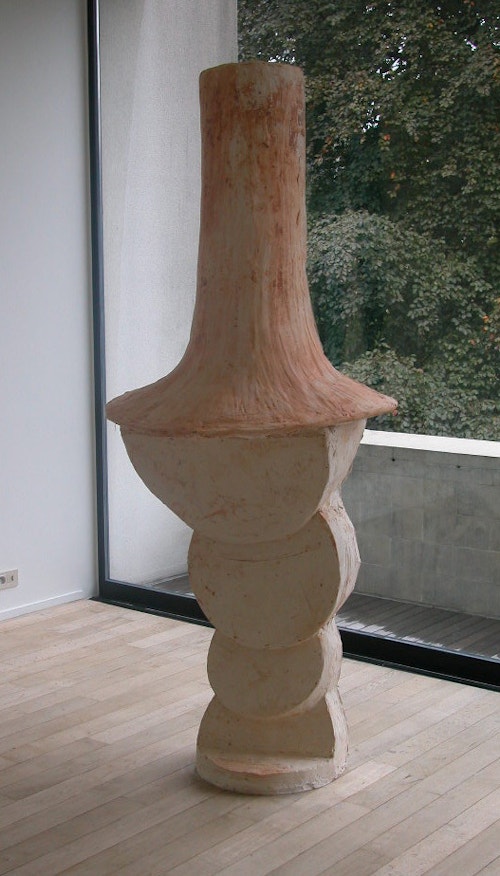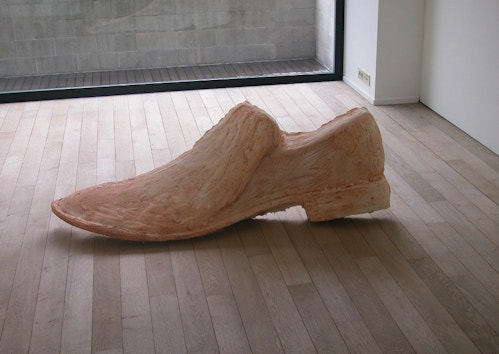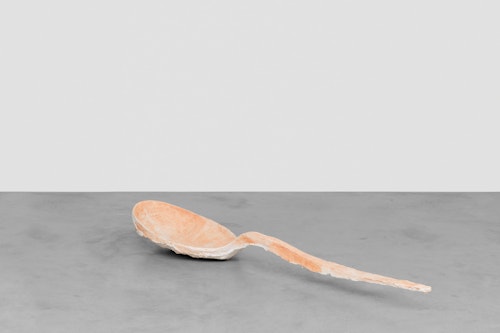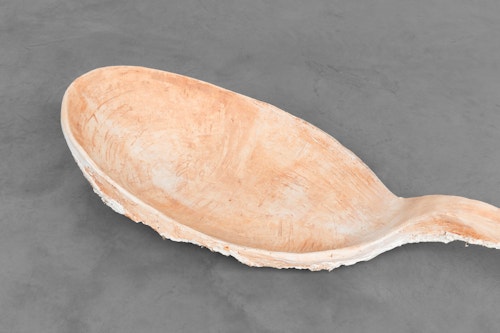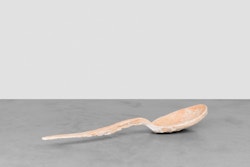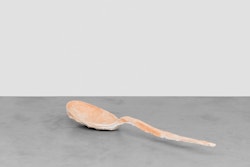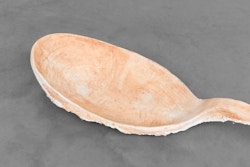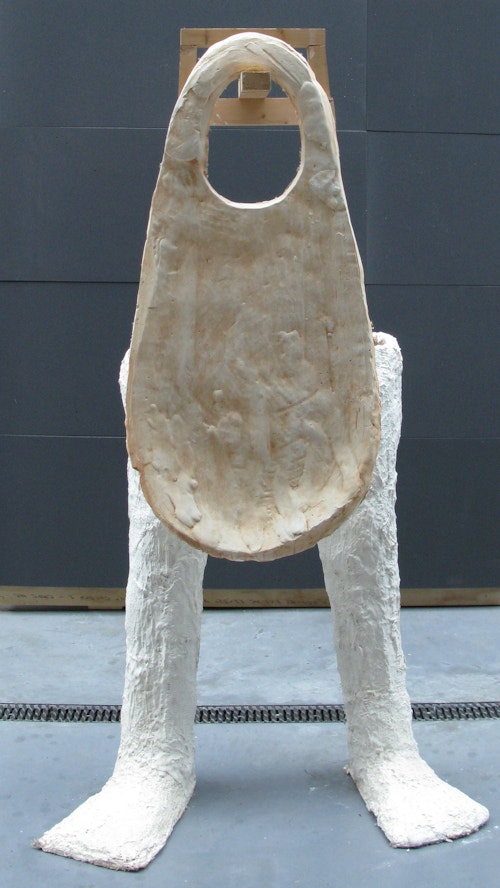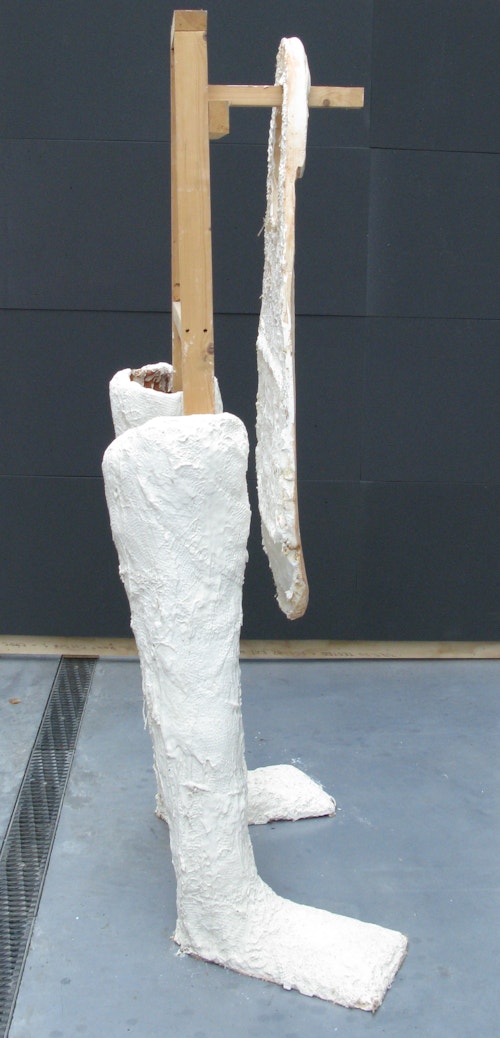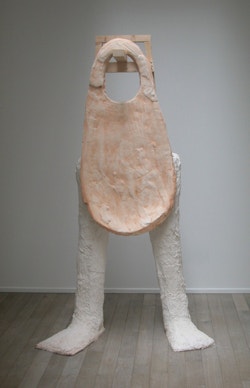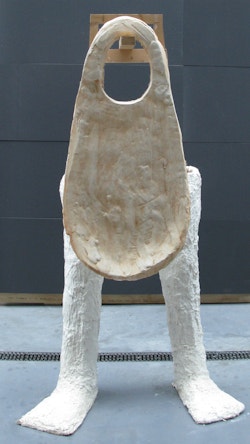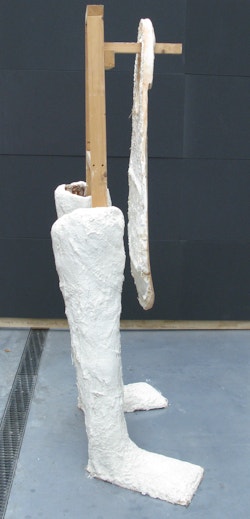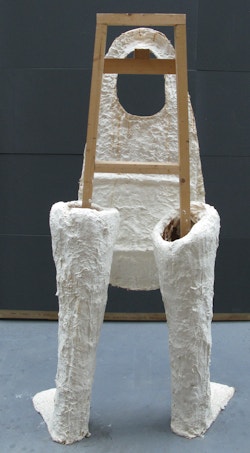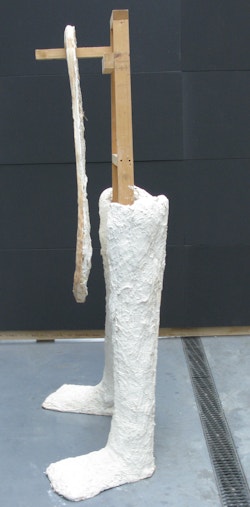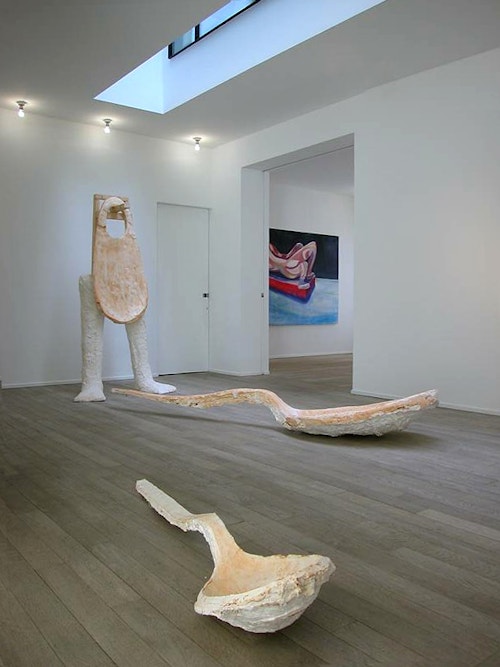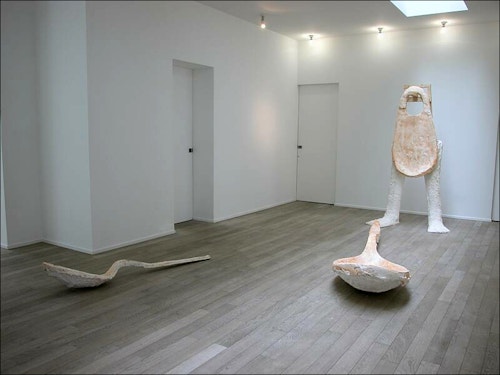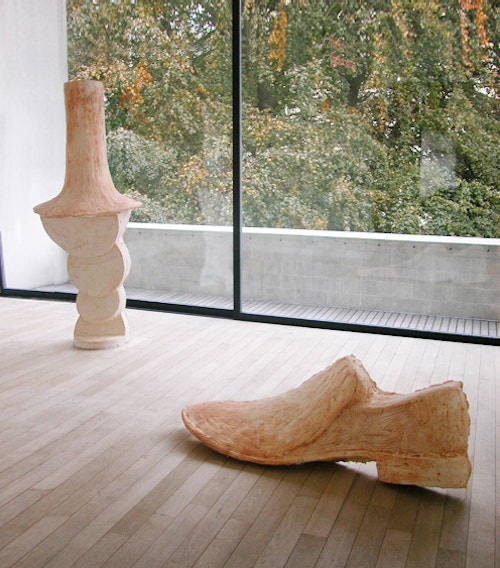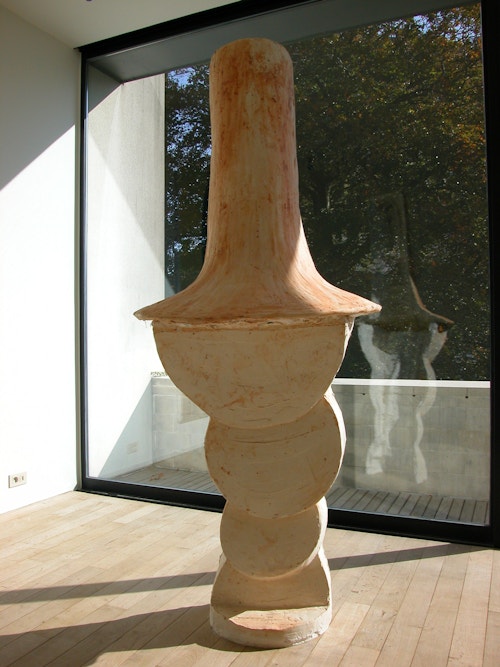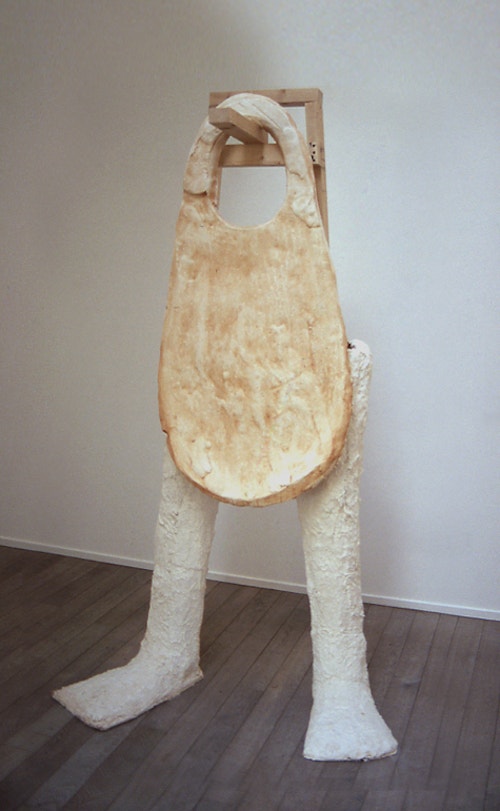
Thomas Houseago Amy Bessone & Thomas Houseago
Amy Bessone & Thomas Houseago work with painting and sculpture in a very transparant, almost primitive way. They cling firmly to the fundamental principles of their art and do not araise any doubts about the methods, techniques or materials they apply: Houseago makes sculptures and casts with plaster and clay, Bessone paints on canvas or paper with watercolours and oil. Yet, this simplicity does not hide any nostalgia for the classical arts but originates from an urge to remain in close contact with the material and expresses a longing to personnally give form to an idea or a sensual experience. The context in which both artists situate their work is undeniably contemporary.

Thomas Houseago was born in Leeds and studied at the famous Saint-Martins School of Art in London. There he was told his sculptures did not look very English because they missed the typical craftmanship of his predecessors’s works, namely Tony Cragg, Richard Deacon or Antony Gormley. During a two-year stay at the Ateliers in Amsterdam, he continued working fiercely on a proper visual language that concentrates on the expressive power of the unfinished and the restricted use of the materials plaster and clay. Thomas Houseago is indeed making some very labour intensive works. His sculptures are modelled in clay and afterwards casted in plaster or they are constructed around an iron formwork and covered with plaster. Here and there, you can still see the traces of the chisel he uses to scrape away the excess bits of plaster or some shreds of jute slipping between the clotty casts of plaster. The end result often is not more than a skin, substantially covered at the back, however, with the remnants of the complete production process. The first breakthrough of Houseago’s work came in 1996 with his exhibition in the Bureau Amsterdam at the Stedelijk Museum where he showed a group of highly expressive and colourful figures. After that, he continued working on the human body and modelled huge muscular masses and headless bodies in impressive poses. The recent sculptures reveal an intense awareness of the essence of sculpture. Thomas Houseago has chosen his motifs by way of their sculptural possibilities and is inspired by factors like positive and negative, texture, light, mass and void, movement and tension, the relation with the floor. The objects taken from daily life, like the spoons, the shoe and the drain lend themselves perfectly to that objective. The human figures are this time assembled out of abstracted forms in order to avoid an interpretation that would rely too much on pyschology. As an installation, the sculptures form a surprisingly classical but, at the same time, very playful unity. Sometimes, you can even sense some hidden black humour that, if only because of the solidity of the objects, reminds you of the still lives of Philip Guston.
Amy Bessone is American and studied painting and graphic art in New York, Paris and Amsterdam. Bessone paints images on canvas and paper in a carefully thought through but rather rudimentary manner. Her work is figurative but does not resign on technical virtuosity. She refuses to concentrate on developping a personal, recognizable style but prefers to put her painterly language to the service of the desired image. Amy Bessone shows a particular interest in rendering tridimensional objects on a flat surface. She stresses this issue by painting mostly artistic and decorative objects, whose identity depends on their specific form and volume. Often, these are sculptures, vases, oriental curiosa and other trinkets that cross the world of antiquities and kitsch. Bessone does not situate her objects in a specific setting but puts them manifestly in the foreground against a vaguely monochrome background, sometimes completed by an abstract definition of space. She varies the format and proportions of the canvas and determines the final image with basic components like composition, colour, texture and light. The result is a highly concentrated, almost archetypal representation of an object that, because of its artistic character, also incorporates the reflection on painting and the visual arts in general. The set tone is straightforward, if not slightly ironic, and coincides with the selection of motives that always walk on the thin line between art and kitsch.
